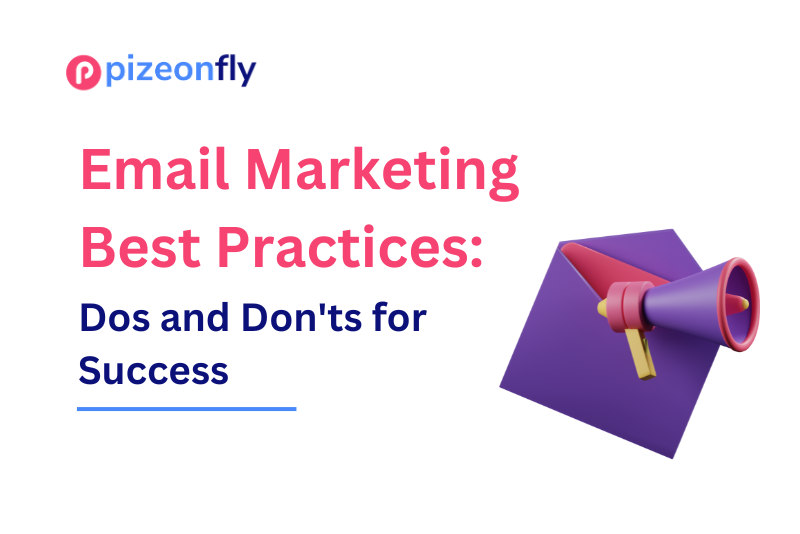Measuring Success: How to Track and Analyze Your Digital Marketing Results
April 17, 2023How to Use Video Marketing to Boost Engagement and Conversions?
May 16, 2023Blogging has become an essential tool for businesses, entrepreneurs, and individuals looking to establish an online presence. With millions of blogs available online, standing out from the competition requires more than just good writing skills. It takes a well-planned content strategy to attract and retain a loyal audience. In this post, we’ll provide you with tips on creating a winning content strategy for your blog.
Step 1: Define Your Goals
Before you start creating content for your blog, you need to define your goals. What do you want to achieve with your blog? Are you looking to increase your online presence, drive traffic to your website, generate leads, or establish yourself as an authority in your industry? Defining your goals will help you create a content strategy that aligns with your objectives.
Step 2: Identify Your Target Audience
Your blog’s content strategy should be tailored to your target audience. Who are your ideal readers? What are their pain points? What topics are they interested in? Answering these questions will help you create content that resonates with your audience.
Step 3: Conduct Keyword Research
Keyword research is essential for any content strategy. By identifying the keywords your target audience is searching for, you can create content that addresses their queries. Use keyword research tools such as Google Keyword Planner, SEMrush, or Ahrefs to find relevant keywords for your blog.
Step 4: Create a Content Calendar
A content calendar is a tool that helps you plan and organize your blog’s content. It enables you to schedule posts in advance and ensures you have a consistent publishing schedule. Use a content calendar to plan your blog’s content for the month, quarter, or year.
Step 5: Create Engaging Content
Creating engaging content is crucial for attracting and retaining a loyal audience. Your content should be informative, entertaining, and valuable to your readers. Use storytelling techniques to make your content more engaging and relatable.
Step 6: Use Visuals
Visuals can make your content more appealing and increase its shareability. Use images, infographics, and videos to make your blog posts more visually appealing. Make sure your visuals are high-quality and relevant to your content.
Step 7: Promote Your Content
Promoting your content is essential for driving traffic to your blog. Use social media platforms such as Facebook, Twitter, and LinkedIn to promote your blog posts. Use email marketing to notify your subscribers when you publish new content.
Step 8: Analyze Your Results
Analyzing your blog’s performance is crucial for optimizing your content strategy. Use analytics tools such as Google Analytics to track your blog’s traffic, engagement, and conversions. Use this data to identify areas for improvement and adjust your content strategy accordingly.
Step 9: Repurpose Your Content
Repurposing your content is an effective way to reach a wider audience and maximize the value of your blog posts. You can turn a blog post into an infographic, video, podcast, or social media post. Repurposing your content also helps you to keep your blog active without creating new content from scratch.
Step 10: Collaborate with Other Bloggers
Collaborating with other bloggers in your industry is an excellent way to reach a new audience and build relationships. You can guest post on other blogs or invite other bloggers to contribute to your blog. Collaborating with other bloggers also helps you to diversify your content and provide fresh perspectives.
Step 11: Keep Up with Trends
Keeping up with the latest trends in your industry is crucial for creating relevant and timely content. Use social media platforms, Google Trends, and industry publications to stay up-to-date with the latest trends. You can also attend industry conferences and events to learn from experts in your field.
Step 12: Engage with Your Audience
Engaging with your audience is essential for building a loyal following and establishing yourself as an authority in your industry. Respond to comments, encourage feedback, and ask your readers for their opinions. Use social media platforms to interact with your audience and build relationships.
Step 13: Monitor Your Competition
Monitoring your competition can help you stay ahead of the game and identify opportunities for improvement. Follow your competitors’ blogs and social media accounts to see what topics they are covering and how they are engaging with their audience. Use this information to inform your content strategy and stay ahead of the curve.
Step 14: Stay Consistent
Consistency is key to building a successful blog. Create a publishing schedule and stick to it. Your readers should know when to expect new content from you. Consistency also helps to build trust with your audience and establish your blog as a reliable source of information.
Step 15: Continuously Improve Your Content Strategy
Creating a winning content strategy for your blog is an ongoing process. As your blog grows and evolves, you need to continuously improve your content strategy. Use the data you collect from your analytics tools to identify areas for improvement. Experiment with new content formats and topics to keep your blog fresh and engaging.
Step 16: Build Backlinks
Building backlinks to your blog is crucial for improving your search engine ranking and driving traffic to your website. Reach out to other bloggers in your industry and ask them to link to your blog. You can also guest post on other blogs and include links to your blog in your bio.
Step 17: Optimize Your Blog for Search Engines
Search engine optimization (SEO) is essential for ensuring your blog appears at the top of search engine results pages. Use relevant keywords in your blog posts, titles, and meta descriptions. Use header tags and alt tags to make your content more accessible to search engines.
Step 18: Use Calls-to-Action
Calls-to-action (CTAs) are essential for converting your blog readers into customers or subscribers. Include CTAs in your blog posts and encourage your readers to take action. Use language that is clear and compelling, such as “Subscribe now,” “Download our ebook,” or “Sign up for our newsletter.”
Step 19: Measure Your ROI
Measuring your return on investment (ROI) is essential for determining the success of your content strategy. Use analytics tools to track your traffic, engagement, and conversions. Calculate the cost of producing your content and compare it to the revenue generated by your blog.
Step 20: Stay Authentic
Authenticity is crucial for building a loyal following and establishing trust with your audience. Be true to yourself and your brand. Use your unique voice and perspective to create content that resonates with your readers. Don’t try to be someone else or copy other bloggers in your industry.
Conclution:
Creating a winning content strategy for your blog requires careful planning and execution. Define your goals, identify your target audience, conduct keyword research, create a content calendar, create engaging content, use visuals, promote your content, and analyze your results. With these tips, you can create a successful blog that attracts and retains a loyal audience.
creating a winning content strategy for your blog takes time and effort, but it’s worth it. Define your goals, identify your target audience, conduct keyword research, create a content calendar, create engaging content, use visuals, promote your content, analyze your results, repurpose your content, collaborate with other bloggers, keep up with trends, engage with your audience, monitor your competition, and stay consistent. With these tips, you can create a successful blog that stands out from the competition and attracts a loyal audience.
In summary:
Creating a winning content strategy for your blog requires a combination of planning, execution, and ongoing improvement. Define your goals, identify your target audience, conduct keyword research, create a content calendar, create engaging content, use visuals, promote your content, analyze your results, repurpose your content, collaborate with other bloggers, keep up with trends, engage with your audience, monitor your competition, stay consistent, continuously improve your content strategy, build backlinks, optimize your blog for search engines, use calls-to-action, measure your ROI, and stay authentic. By following these tips, you can create a successful blog that establishes you as an authority in your industry and attracts a loyal following.



